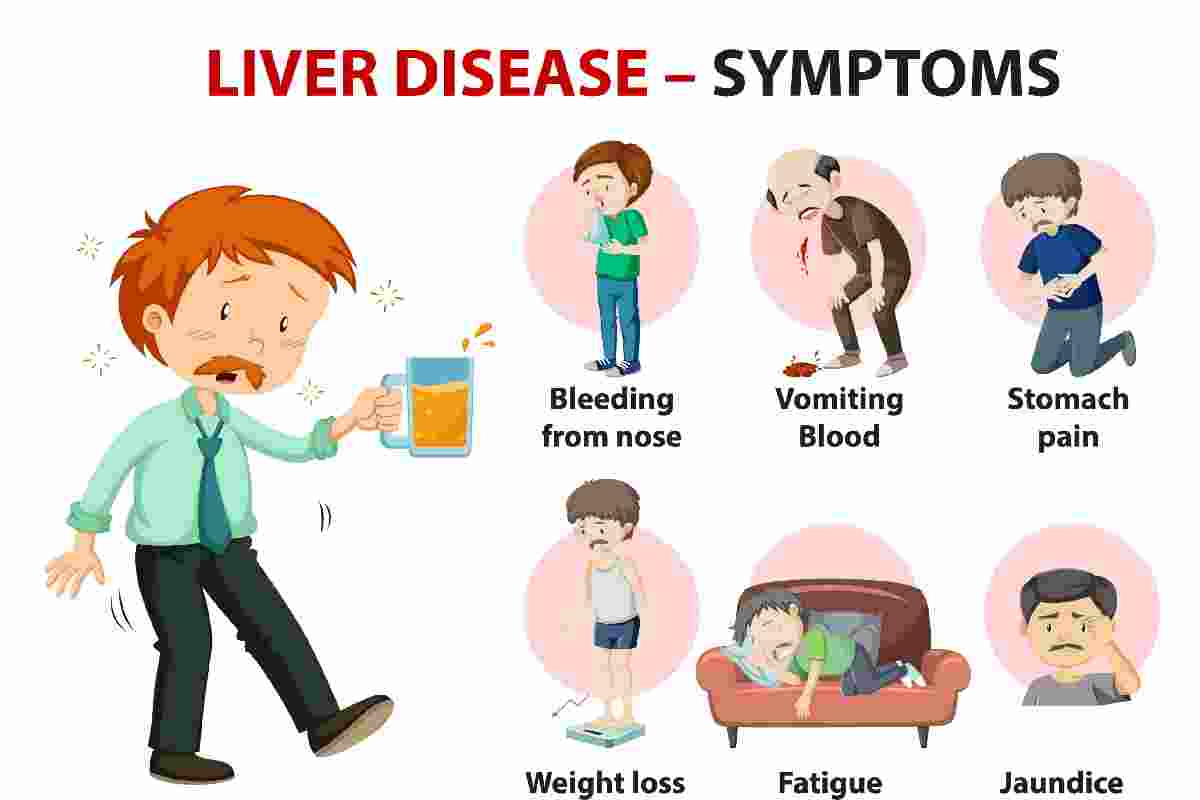The many different forms of liver disease Symptoms include those brought on by infections, hereditary disorders, obesity, and alcohol abuse. Scarring and more severe consequences may develop due to liver disease over time. The damage can remain repaired, and liver failure can remain avoided with early therapy.
Table of Contents
What is Liver Disease?
The liver is the second-largest organ in your figure. It is roughly the size of a football and rests on the right side of your ribcage. The liver separates nutrients and waste as they move through your digestive system. It also produces bile, a substance that carries toxins out of your body and aids digestion.
“liver disease” refers to several conditions that can affect and damage your liver. Over time, liver disease can cause cirrhosis (scarring). As more scar tissue replaces healthy liver tissue, the liver can no longer function properly. Liver disease can lead to liver failure and liver cancer.
How Common is Liver Disease?
About 1 in 10 Americans (30 million) have some liver disease. About 5.5 million people in the U.S. have chronic liver disease or cirrhosis.
Some types of liver disease are becoming more common in the U.S. because they are related to rising rates of obesity. An estimated 20% to 30% of adults have excess fat in their liver; a condition called nonalcoholic fatty liver disease (NAFD). Metabolic-associated fatty liver disease (NAFLD) may remain renamed to reflect its relationship to metabolic syndrome and illnesses like diabetes, high blood pressure, high cholesterol and obesity.
What Causes Different types of Liver Disease?
Different types of liver disease result from other causes. Liver disease may result from:
Viral infections: Hepatitis A, hepatitis B and hepatitis C are diseases caused by a viral infection.
Problems with your immune system: When your immune system mistakenly attacks your liver, it can cause autoimmune liver diseases. These include primary biliary cholangitis and autoimmune hepatitis.
Inherited diseases: Some liver problems develop because of a genetic condition (the one you inherit from your parents). Inherited liver diseases include Wilson disease and hemochromatosis.
Cancer: You may develop tumours when abnormal cells multiply in your liver. These tumours may be benign (noncancerous) or malignant.
I was consuming too many toxins: Alcoholic fatty liver disease results from misusing alcohol. Nonalcoholic fatty liver disease (NAFLD) results from drinking too much fat. NAFLD is becoming more common as rates of obesity and diabetes rise.
What are the Symptoms of Liver Disease?
Some types of liver disease (including nonalcoholic fatty liver disease) rarely cause symptoms. For other conditions, the most common symptom is jaundice — a yellowing of your skin and the whites of your eyes. Jaundice develops when your liver can’t clear a substance called bilirubin.
Other signs of liver disease may include:
- Abdominal (belly) pain (especially on the right side).
- Bruising easily.
- Changes in the colour of your urine or stool.
- Fatigue.
- Nausea or vomiting.
- Swelling in your arms or legs
Alcohol-related liver disease is often first suspected when tests for other medical conditions show a damaged liver. It is because the condition causes few obvious symptoms in the early stages. If a doctor suspects ARLD, they’ll usually arrange a blood test to check how well your liver is working. They may also ask about your alcohol consumption.
Being honest about how much and how often you drink alcohol is essential. It is to avoid further unnecessary testing, which could delay the treatment you need.
Is there a cure for cirrhosis of the liver? No, there is no cure for cirrhosis. The damage already done to your liver is permanent. However, depending on the underlying cause of your cirrhosis, there may be actions you can take to keep your cirrhosis from getting worse.
Conclusion
An organ around the size of a football is the liver. The right side of your abdomen is located immediately below your ribs. The liver is crucial for food digestion and detoxifying your body of harmful toxins.
Liver disease may run in families (genetic). Viruses, alcohol use, and obesity are just a few variables that can harm the liver and result in liver disorders. Cirrhosis, which can cause liver failure and be fatal, is a disorder that develops over time as a result of liver damage situations. But early intervention can offer the liver some breathing room.

